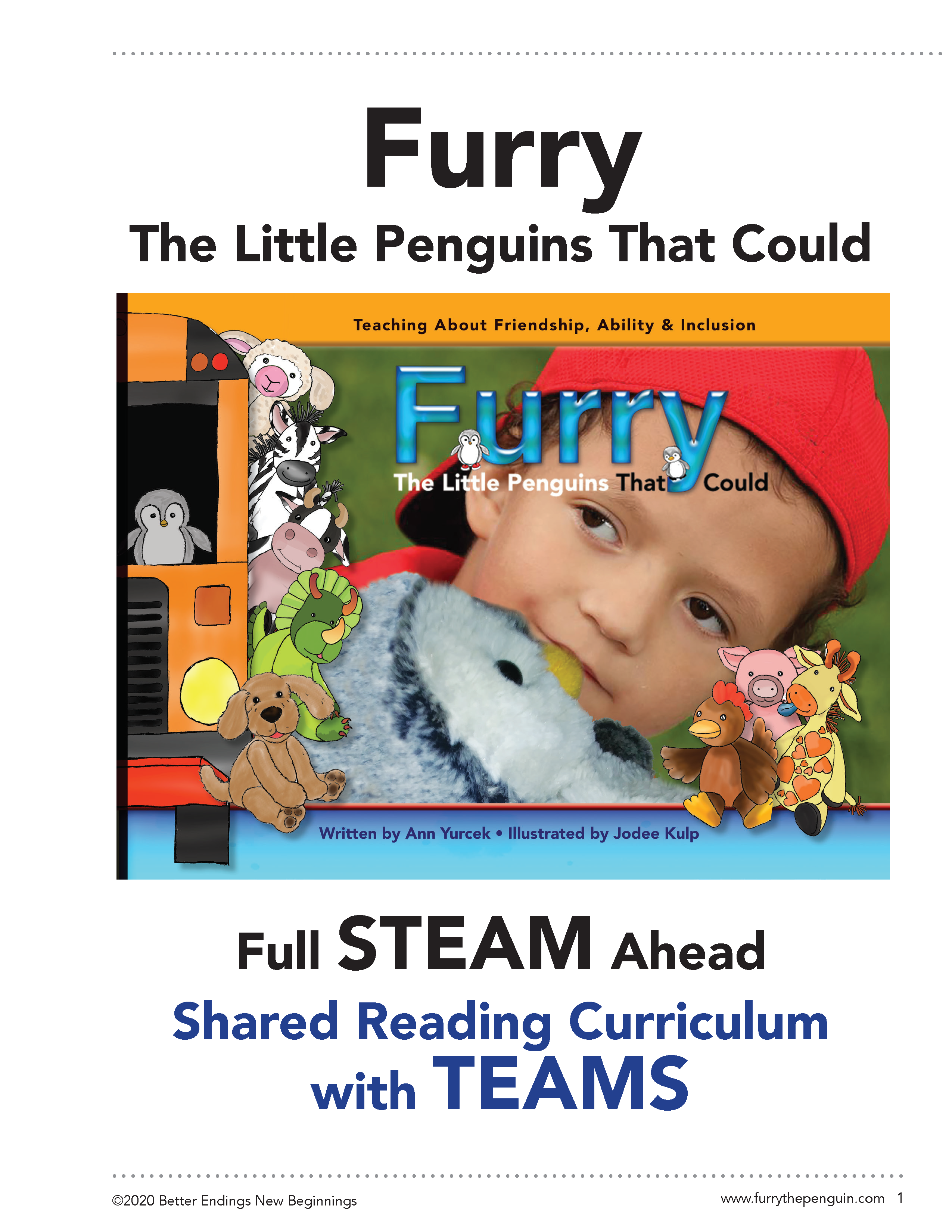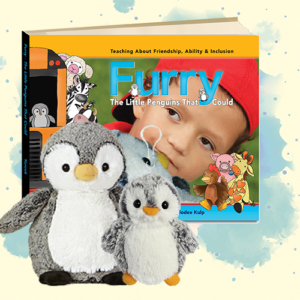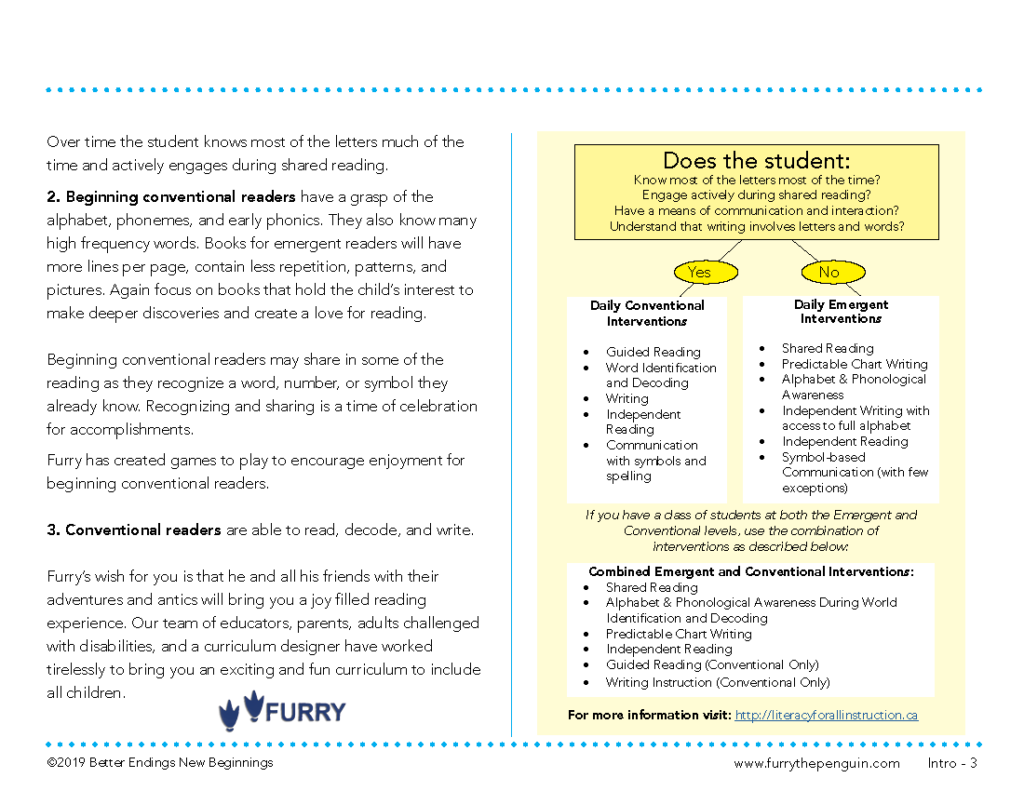
Developed by Marcia Chambers,
Ann Yurcek, Jodee Kulp, Jeff Peterson, Mac, his friends,
and all the Kindergarten Stuffies.
Read Together with Shared Reading

Furry – The Little Penguins That Could is designed to be a Shared Reading opportunity for children in schools, day programs, and homes. Children learn through play. Furry is playful, can be silly, and meant to be enjoyed. Shared reading creates a sense of togetherness in the classroom or at home. It empowers children to become peers and support partners. Shared Reading is an interactive reading experience that happens when students share reading a book while supported and guided by a teacher, friend, or caregiver.
The “Reader” models reading with expression and fluency. The child connects as he or she communicates with the story. As you will learn in Mac’s life, he connected through a stuffed penguin. Shared reading supports and encourages emerging readers to participate while listening and understanding the story.
The Furry -The Little Penguins That Could Shared Reading Curriculum is designed to enhance the love of reading through listening, playing, and participating with others.

The thirty chapters in this 204-page book stand-alone or can be read together. Each chapter is between 4-15 minutes of reading. Written above the reading level of many 3 to 8-year-olds, shared reading of this 30 chapter, fully illustrated book allows children to participate in a challenging reading experience regardless of ability. Children will get a sense of accomplishment. Main Readers will discover each curriculum chapter is filled with ideas to create a classroom that bridges friendships, promotes acceptance of differences, and includes everyone.
Furry provides chapter videos and links to help the main readers develop skills. We offer creative learning ideas for art projects, listening, talking, singing, movement, and playing games to build a love of reading.
Furry is a true story about a real child.
The story reaches out to all ages and stages of readers.
The Furry curriculum is designed for children ages 3-8 in three developmental reading levels:
1. Emergent readers.
2. Beginning conventional readers.
3. Conventional readers.
Emergent readers are individuals beginning to grasp the basic concepts of book and print.
Shared reading of this book with emergent readers is engaging and multi-sensory. If a child is showing interest, asking a question, or making a statement take the time to engage the child
Emergent readers are encouraged to:
- Talk about the story.
- Look and talk about the
picture . - Enjoy the reading experience.
Emergent readers are learning the alphabet.
Research has shown that learning the UPPERCASE letters first, which have more variation leads to better understanding and allows for the
When searching for books for early emergent readers look for concepts of interest to the person, large print with wider spacing, natural language and picture support of the story. Often these books have carefully controlled text, repetitive patterns, and limited text on a page. Furry – The Little Penguins that Could is an introduction to a larger more robust reading experience to encourage children to develop the love of reading and listening to reading.
Children move towards a more conventional understanding of literacy as they have
Over time the student knows most of the letters much of the time and actively engages during shared reading.
Beginning conventional readers have a grasp of the alphabet, phonemes, and early phonics.
They also know many
Beginning conventional readers may share in some of the reading as they recognize a word, number, or symbol they already know. Recognizing and sharing is a time of celebration for accomplishments.
Furry has created games to play to encourage enjoyment for beginning conventional readers.
Conventional readers are able to read, decode, and write.
Furry’s wish for you is that he and all his friends with their adventures and antics will bring you a joy-filled reading experience. Our team of educators, parents, adults challenged with disabilities, and a curriculum designer
The chart below has been adapted from the Literacy For All Instructions in Canada – For more information visit: http://literacyforallinstruction.ca
